Next week 538 American citizens will travel to their state capitals and elect the president of the United States. These Americans, chosen for loyalty to their political party, will vote for the presidential candidate who won their state’s popular vote.[1] Only when they sign “the certificate of ascertainment” and the votes are tallied in the United States Congress is the presidential race officially over. As we all know only too well, in practice this archaic system means that the person who wins the most votes may not win the election.
This has happened five times in American history. Three happened in the 19th century; none in the 20th century and two in the 21st century. We will focus on elections in the 20th and 21st centuries.
In the 20th century there were 25 presidential elections and none of them resulted in an Electoral College winner who lost the popular vote. However, in the five presidential elections of the 21st century, two ended up with the winner of the popular vote losing the Electoral College. In 2000 Vice President Al Gore won the popular vote against Governor George W. Bush by 543,895. After a long battle in Florida Bush won the state narrowly, giving him an Electoral College victory of 271 to 266 over Al Gore. In 2016, the results were even more dramatic. Hillary Clinton won the popular vote by 2,868,686 and yet lost the Electoral College vote: 304 for Trump and 227 for Clinton. And, as our colleague Bill Galston has written, the Electoral College continues to be a “ticking time bomb.” In the 2020 presidential election “a shift of just 45,000 votes in three states, Wisconsin, Georgia and Arizona… could have shattered Americans’ belief in the legitimacy of their political system” by creating a tie in the Electoral College and sending the election to the House of Representatives. That could have happened even though Biden won the popular vote by 7,060,087 (and counting)—a margin even larger than the margins won by George W Bush in 2004 and Barack Obama in 2012.
This can’t go on. Having the person who loses the popular vote win the presidency will seriously undermine the legitimacy of our elections.
Why is this happening now?
Today about 1.3% of those employed in the United States work directly in agriculture, and they manage to feed the entire country and beyond. This is the result of an amazing technological revolution, but what does it have to do with the Electoral College? Plenty. As the graph below illustrates, over the course of the 20th century the distance between the biggest state by population and the median state increased. For instance, in 1900 New York was the biggest state in the union with 7,268,894 people and the state with the median population, Louisiana, had 1,381,625 people. So, the state at the median had 19% of the population of the largest state. But as people moved and the economy changed so did that ratio. By 2019, the median state was Kentucky with 4,467,673 which made it 11% of the population of California, the biggest state in the union with 39,512,223 people.
While people were moving to the coasts, especially California, the Electoral College stayed the same. And so each Electoral College vote in a small state like Delaware or Wyoming is worth more than an Electoral College vote in a big state like California. As the Washington Post has shown, the four most populous states, California, Texas, Florida and New York are all dramatically underrepresented in today’s Electoral College. These imbalances effectively ensure that some votes in presidential elections are worth more than others, and as that imbalance scales up across the entire Electoral College, it can (under the right circumstances) provide the recipes for popular vote winners losing the Electoral College. Right now, those circumstances tend to benefit Republicans in the Electoral College, while disadvantaging Democrats who have won the popular vote in seven of the last eight elections.
This imbalance is primarily a 21st century phenomenon and it could, of course, change in the years to come as some states grow and other states shrink in population. But the fact is that we are now one country, whereas in 1789 we were 13 colonies desperately trying to hold onto some semblance of their independence—hence a political deal was struck that now threatens the very democracy for which they were trying to create a lasting framework.
What can’t we do? What can we do?
Article II, section 1 of the Constitution establishes the Electoral College. It is extremely difficult to amend the Constitution. Article V sets up the manner by which an amendment is passed. While there are two different means to amend the founding document, this country has always used the same route: a 2/3rds vote in both houses of Congress, followed by the ratification of 3/4ths of the states. A plan to scrap the Electoral College via constitutional amendment would not pass in the current environment.
To understand why, let’s start from the point we make above: the Electoral College system currently benefits Republicans, as two Republican presidents in the last 20 years have been elected despite losing the popular vote and that nearly happened a third time this year. As a result, Republicans and Republican state governments are incentivized to maintain the current system. In the current Congress, this would require every Democratic House member to vote in favor of such an amendment and be joined by 59 Republicans and every Democratic Senator to be joined by 19 of their Republican colleagues. Such an effort would likely receive little or no Republican support.
If such an amendment were to pass Congress, defeat in the states is likely. Even if all 25 of the states that Mr. Biden won in 2020 were to ratify such an amendment, nine additional states that President Trump won would need to ratify it as well. Yet, ratification happens not by popular vote but by state legislature. In this case, 19 state legislatures are currently controlled solely by Democrats. Another 15 legislatures with varying degrees of Republican control would also need to ratify such an amendment for the Electoral College to be removed.
The National Popular Vote Interstate Compact
However, a constitutional amendment is not the only means by which an alternative to the current Electoral College can be implemented. The most popular alternative is the National Popular Vote Interstate Compact (NPVIC). Started in the mid-2000s, the NPVIC is a fairly straightforward system that capitalizes on the constitutional guarantee that states are free to determine the manner in which they award their electoral votes. The compact requires states to pass laws that would award their electoral votes to the candidate who wins the popular vote nationally. Under the current plan, states that join will not activate the compact until enough states have joined to total 270 electoral votes. That is, the compact does not go into effect until there is a critical mass of states for it to be effective.
Currently, 15 states and DC have approved the NPVIC. These states currently total 196 electoral votes, although after the 2020 census is completed, projections suggest a net loss of two seats, lowering that number to 194. Each of those states has Democratic control of the state legislature. If the remaining states with Democratic control of the legislature (Maine, Nevada, and Virginia) were to sign on, it would add an additional 23 Electoral College votes.[2] The compact would then be 43 Electoral College votes short of going into effect. It should be noted, there is debate about the permissibility of such a proposal and its going into effect would likely face a flurry of lawsuits. Nonetheless, it is likely the most viable alternative to the current Electoral College system.
Alternatives to winner-take-all
As discussed above, the only practical way of ending the Electoral College is by changing the ways in which states use the popular vote to award electors to the presidential candidates. In addition to the NPVIC discussed above, there are two variations on this theme that could reduce the odds that someone could win the presidency without winning the national popular vote.
In the first instance, states could decide to award 2 Electoral College votes (EVs) to the winner of the national popular vote (NPV) and the remainder to the winner of the state. That means that the national winner would start out with 102 Electoral College votes. In most cases this should prevent the popular vote loser from becoming president. For instance, if a hotly contested state like Wisconsin broke for the candidate who lost the popular vote, eight of its ten electoral votes would be added to their tally. The following table shows how this would have changed the outcome in the two contested elections of the 21st century and includes 2004 for comparison.
Alternative 1: Two electoral votes to national popular vote winner; state winner-take-all for the remainder
| Actual final* | 2EVs/state for NPV win** | Alternative 1 Final*** | |
|---|---|---|---|
| 2000 | |||
| Bush EVs | 271 | -60 | 211 |
| Gore EVs | 266 | 60 | 326 |
| 2004 | |||
| Bush EVs | 286 | 38 | 324 |
| Kerry EVs | 251 | -38 | 213 |
| 2016 | |||
| Trump EVs | 304 | -63 | 241 |
| Clinton EVs | 227 | 63 | 290 |
*Each of these races included faithless electors, such that the total of electoral votes, as shown, does not equal 538.
** Adjusted Maine to act as one state rather than separate EV districts.
*** For the purposes here, all electoral votes in a given state were awarded to the proper winner, thus attributing faithless electors to the proper candidate. Electoral vote totals will equal 538. In each case, the number of faithless electors who exercised that behavior would not have had a meaningful impact on the outcome.
Source: Daily Kos Elections
A second variation would be to award two Electoral College votes from each state to the winner of the national popular vote and award the remaining electors to the winner of each congressional district (CD). Nebraska and Maine already award some of their electors to the winners of the congressional districts. An example of a state closely split by congressional district is Florida in 2016, where Trump won in 14 of them and Clinton won in 13. Under this option, Florida would give 15 Electoral College votes to Clinton and 14 to Trump.
The following table shows how this would have changed the outcome in two contested elections of the 21st century, and how a third would have remained the same.
Alternative 2: Two electoral votes to national popular vote winner; remainder apportioned by congressional district
| Actual final* | CD wins** | Popular vote# | Alternative 2 Final## | |
|---|---|---|---|---|
| 2000 | ||||
| Bush EVs | 271 | 238 | 0 | 238 |
| Gore EVs | 266 | 198 | 102 | 300 |
| 2004 | ||||
| Bush EVs | 286 | 252 | 102 | 354 |
| Kerry EVs | 251 | 184 | 0 | 184 |
| 2016 | ||||
| Trump EVs | 304 | 230 | 0 | 230 |
| Clinton EVs | 227 | 206 | 102 | 308 |
*Each of these races included faithless electors, such that the total of electoral votes, as shown, does not equal 538.
**Here, we treat the District of Columbia as a single congressional district (as the 23rd Amendment to the Constitution does for the purposes of the Electoral College).
# Because the District of Columbia is awarded Electoral College votes under the 23rd Amendment, we include its votes here as if it were a state. In the Electoral College, there are 51 voting jurisdiction (“states”) that includes D.C.
## For the purposes here, all electoral votes in a given state were awarded to the proper winner, thus attributing faithless electors to the proper candidate. Electoral vote totals will equal 538. In each case, the number of faithless electors who exercised that behavior would not have had a meaningful impact on the outcome.
Source: Daily Kos Elections
The political problem
Throughout history there have been over 700 attempts to reform or abolish the Electoral College, according to the Congressional Research Service. And even though it is widely acknowledged that the Electoral College is a “ticking time bomb” that could seriously erode American democracy, none of these attempts has been successful. That’s because, regardless of its overall merits, change is always rooted in the politics of the day. As we begin the third decade of the 21st century, change benefits the Democrats.
This is clear in polling on the topic. As we can see from questions posed in two respectable polls, Pew and Gallup, in spite of the fact that majorities support change it is Democrats who support it and Republicans who oppose it
| Amend the Constitution so the candidate who receives the most votes wins | |
|---|---|
| Overall | 58% |
| Democrat/Lean Democrat | 81% |
| Republican/Lean Republican | 32% |
Source: Pew Research Center
| Amend the Constitution | Keep the current system | |
|---|---|---|
| Total | 61% | 38% |
| Republican | 23% | 77% |
| Independent | 68% | 31% |
| Democrat | 89% | 10% |
Source: Gallup
This polling reflects why a constitutional amendment to get rid of the Electoral College will not pass the U.S. Congress any time soon, nor would it have anywhere near the necessary support in state legislatures. It is not simply Republican elected officials who want to maintain the Electoral College system; Republican voters support it as well. In a polarized political environment, such an institutional structure remains entrenched. It also means the road to any kind of reform is fraught with political potholes, particularly when the removal of such a system clearly benefits one party at the expense of another.
Conclusion
Despite political challenges to reforming the manner in which the United States selects its president, there is danger in maintaining the status quo. If the Electoral College system begins to prevent, on a regular basis, the popular vote winner from becoming president, it will create systemic challenges. Faith in elections, trust in government, and the legitimacy of elected officials and the offices they hold will be challenged by a system that consistently turns its back on the will of the voters. And while Electoral College winning/popular vote losing presidents are formally and technically legitimate holders of the office, the perception that a broken system is anti-democratic and anti-majoritarian can have wide-reaching, penetrating, long-term consequences for the health of a democracy. Maintaining the Electoral College may seem like the most politically expedient position for the Republican Party in the short term, but it may cause significant damage in the long term.
Note: A previous version of this post stated that awarding 2 electoral votes per state (plus D.C.) to the national popular vote winner would form a baseline of 138 votes. The correct number is 102.
[1] Over the years some of them, so-called “faithless electors”, have deviated from this norm but in 29 states and the District of Colombia state laws exist which bind the electors to vote for the winner of the popular vote. See: https://www.brookings.edu/blog/fixgov/2020/10/21/can-the-electoral-college-be-subverted-by-faithless-electors/
[2] Both chambers of the New Hampshire legislature are currently controlled by Democrats; however, the 2020 elections shifted both chambers to Republican control. The state also reelected their Republican governor in 2020.
-
Acknowledgements and disclosures
Christine Stenglein and Saku Gopinath provided research support for this post.
The Brookings Institution is committed to quality, independence, and impact.
We are supported by a diverse array of funders. In line with our values and policies, each Brookings publication represents the sole views of its author(s).

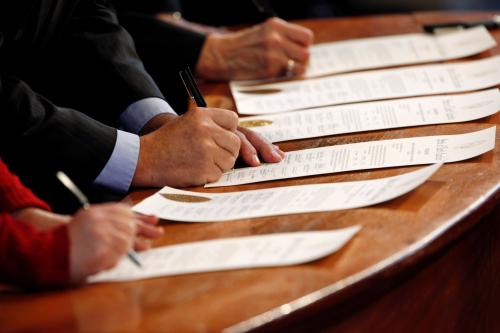
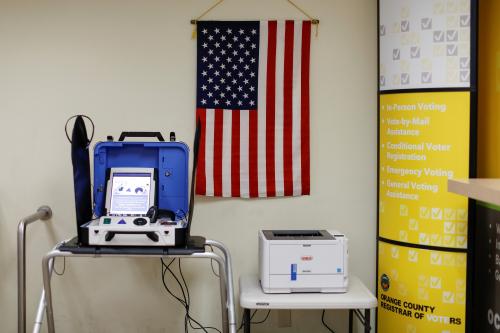
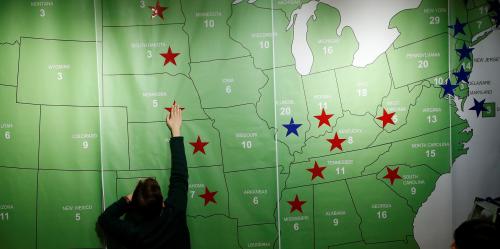


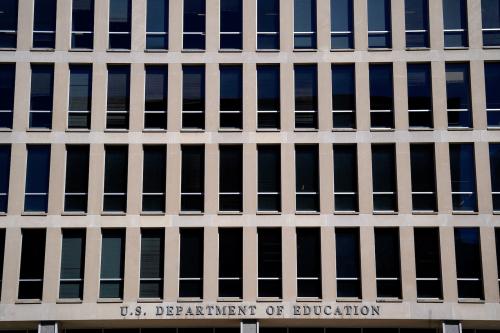

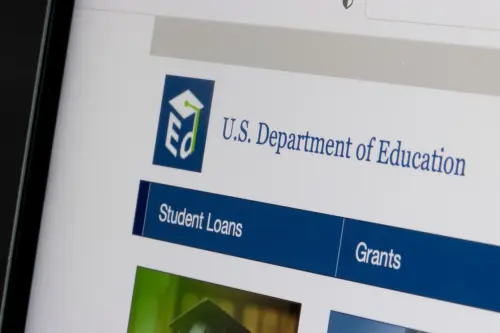
Commentary
How to get rid of the Electoral College
December 9, 2020